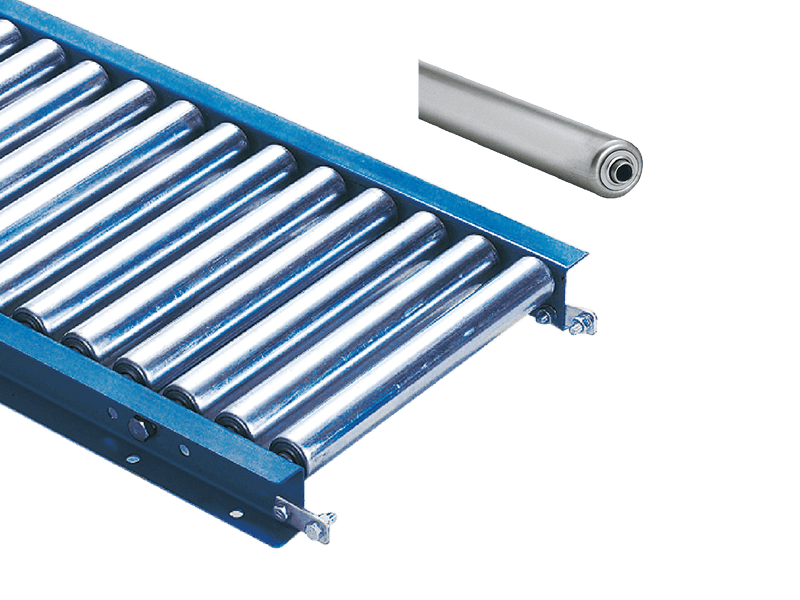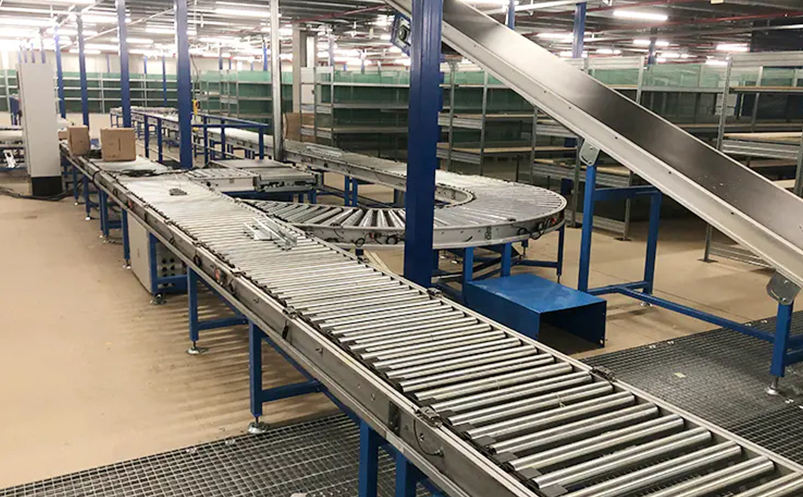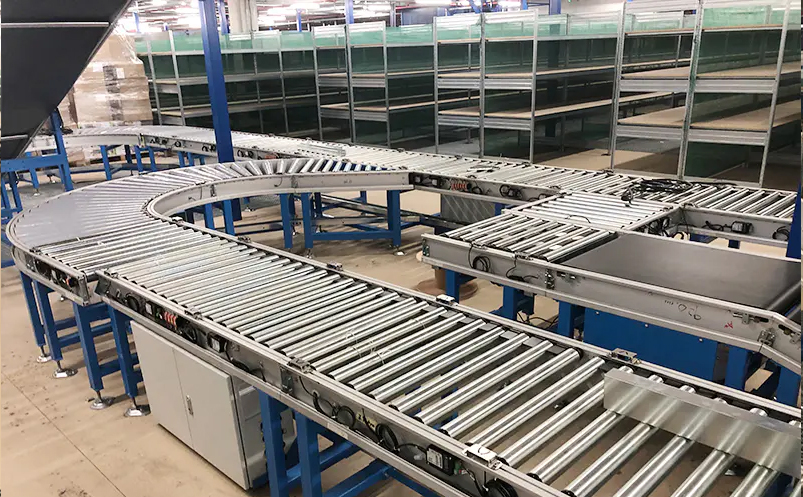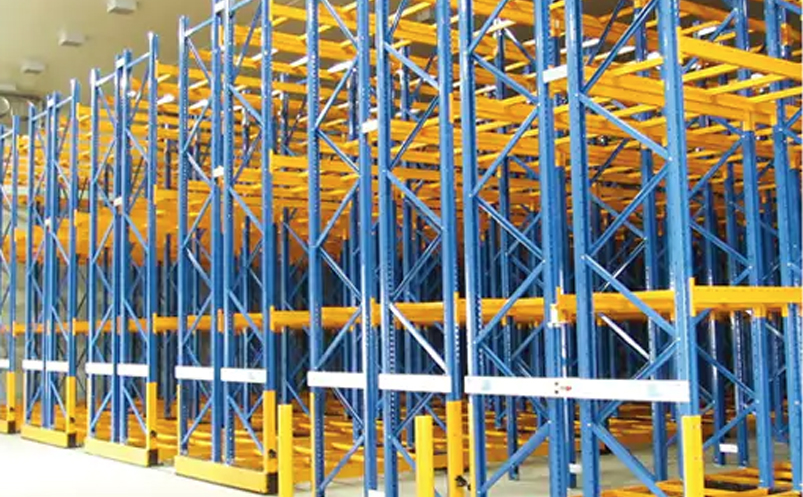Roller conveyor is the humble machines of material handling. Widely used in factories, warehouses, distribution centers, airports, and even packaging lines, they efficiently move everything from small cartons and totes to heavy pallets and industrial components. Their simplicity, reliability, and versatility make them indispensable equipment. However, due to the wide variety of roller conveyor types, choosing the right one is crucial for achieving optimal performance and cost-effectiveness. This guide provides an in-depth look at the different types of roller conveyors, explaining their mechanisms, applications, advantages, and limitations to help you make an informed decision.
How Roller Conveyors Work
The core of a roller conveyor consists of a series of cylindrical rollers mounted in parallel within a frame. These rollers provide a rolling surface for the conveyed objects. The main differences between different types of roller conveyors are whether the rollers are powered and their respective design features:
Gravity Roller Conveyor:
Mechanism: Relies entirely on gravity. Objects move down an incline under their own weight. On horizontal sections, objects must be pushed or pulled manually.
Rollers: Typically made of steel (painted or galvanized), plastic (nylon, polypropylene, acetal), or occasionally stainless steel. Roller diameter and spacing (pitch) vary depending on load size and weight.
Applications: Suitable for temporary production lines, truck loading and unloading, packaging stations, assembly lines where manual movement is acceptable, and as an extension to powered conveyors. Commonly used for moving non-fragile items such as boxes, barrels, totes, and pallets.
Advantages: Low initial cost, low maintenance (no motor or drive required), easy installation and reconfiguration, energy-efficient (no power supply required).
Variations: Straight sections, curves (using tapered rollers), merging sections, gates/stops.
Powered Roller Conveyors (Electric Roller Conveyors):
Mechanism: An external motor drives the rollers through various methods (see subtypes below). This allows the rollers to move on both flat and incline surfaces, and provides controlled speed and accumulation.
Applications: Essential for automation, heavy-load handling, controlled transport, incline/decline operations, sorting systems, pre-process accumulation, and integration with other automated equipment such as sorters or palletizers.
Benefits: Active motion control, capable of moving loads on both flat and incline surfaces, can handle heavier loads than gravity conveying, enables automation and integration, and provides control over accumulation and speed.
Key Subtypes of Powered Roller Conveyors
Powered roller conveyors are further categorized by their drive mechanism, which significantly impacts their performance, cost, and suitability:
Belt-Driven Roller Conveyors:
Mechanism: A continuous belt runs underneath the rollers. The bottom surface of each roller contacts this moving belt, causing the roller to rotate. Rollers are typically spring-loaded to maintain contact with the belt.
Applications: General material handling, medium-duty loads, carton handling, accumulation zones (requires specific control), where lower noise is desired compared to chain drive. Often used in distribution centers and manufacturing.
Advantages: Generally quieter than chain-driven, good for accumulation (with zone control), smoother starting/stopping, lower initial cost than motorized rollers.
Chain-Driven Roller Conveyors:
Mechanism: Chains (single or double strand) run along the sides of the conveyor frame. Sprockets attached to the ends of the rollers mesh with these chains. The motor drives the chain, which in turn drives the sprockets and rollers.
Applications: Heavy-duty applications, moving pallets, drums, large containers, tires, industrial products. Common in manufacturing, warehousing heavy goods, lumber mills, and harsh environments.
Advantages: Very robust, handles extremely heavy loads, durable in harsh environments (dirt, debris, temperature), simple drive mechanism, good for long runs.
Motorized Roller Conveyors (MDR - Motor Driven Roller):
Mechanism: Each roller (or small group of rollers) contains its own internal motor and gearbox. Power is supplied to the rollers via a low-voltage bus system (typically 24V or 48V DC) running along the conveyor frame. Sensors and controllers independently manage each zone.
Applications: High-efficiency accumulation areas, sorting systems, areas requiring independent start and stop functions, energy-saving systems, and applications requiring precise control and flexibility. Widely used in modern distribution centers and automated warehouses.
Advantages: Excellent accumulation control (zero or minimal pressure), energy savings (rollers operate only when loaded), quiet operation, easy zoning and control, simplified wiring (low-voltage bus), and low maintenance costs for the rollers themselves.
Line Shaft Conveyors:
Mechanism: A rotating shaft (referred to as the "spindle") runs the entire length of the conveyor, located beneath the rollers. Each roller is encircled by a polyurethane drive belt (O-ring) that wraps around the spindle. As the shaft rotates, friction drives the belt, which in turn rotates the rollers.
Applications: Medium-duty conveying, accumulation, bidirectional movement, packaging lines, and light assembly. Suitable for products requiring gentle handling.
Advantages: Relatively quiet, easily accumulates by lifting the rollers off the belt (using pop-up pins or a pneumatic lift), bidirectional operation, and relatively simple maintenance (only belt replacement is required).

Specialized Roller Conveyor Types
Beyond the basic gravity and powered categories, specific applications demand specialized designs:
Pallet Roller Conveyors:
Features: Heavy-duty frame, larger diameter rollers (typically 3.5 inches or larger), tighter roller spacing, and higher load capacities (thousands of pounds). Available with gravity or power drive (chain drive is very common for heavy-duty pallet conveying, while motorized roller conveyors are increasingly used for lighter pallet conveying and accumulation conveying). Often includes guide rails.
Applications: Pallet conveying in warehouses, manufacturing plants, distribution centers, and loading docks.
Accumulating Roller Conveyors:
Mechanism: Achieved through specific drive types and control methods:
Zero-pressure accumulation: Primarily used with MDR conveyors. Sensors detect when a zone is blocked and stop the rollers in that zone only. The upstream rollers continue to operate until the next zone is full, preventing product contact. Suitable for fragile items.
Minimum-pressure accumulation: Used in conjunction with belt-driven or spindle-driven conveyors. Provides some cushioning but allows for slight contact between products. Less accurate than zero-pressure accumulation.
Applications: Inter-process buffering, variable-rate feeders, sorting induction, and packaging lines.
Grooved Roller Conveyors (V-Roller or O-Roller):
Application: Attaches to flanged wheels on carts, trolleys, or other guided vehicles. The flange rests within a groove, maintaining perfect alignment along the conveyor path without the need for external guide rails. Essential for complex automated guided vehicle (AGV) or rail-mounted cart systems.
Applications: Automated assembly lines, paint shops, and material handling systems using custom carts.
Flexible Roller Conveyors (Gravity):
Applications: Temporary lines, loading/unloading trucks where the conveyor path needs to adapt, workstations requiring adjustable feed points. Not powered.
Stainless Steel Roller Conveyors:
Applications: Food and beverage processing, pharmaceutical manufacturing, chemical plants, wash-down environments, cleanrooms – anywhere corrosion resistance, hygiene, and easy cleaning are paramount.
Plastic Roller Conveyors:
Applications: Light-duty applications, wet environments (corrosion resistance), food handling (non-marking), noise-sensitive areas, conveying items where metal rollers could cause damage (e.g., painted surfaces). Frames can be plastic or powder-coated steel.
Key Considerations for Choosing the Right Roller Conveyor
Selecting the optimal roller conveyor type involves evaluating several factors:
Load Characteristics: The weight, size (length, width, bottom surface), and fragility of the items being conveyed. Determines the roller diameter, spacing, material, and frame strength.
Throughput Requirements: The number of items per hour. Impacts the conveyor speed and width.
Conveyor Path: Straight, curved, uphill, or downhill? This determines the appropriate conveyor type (e.g., tapered rollers for curved conveying) and the required drive power for uphill conveying.
Control Requirements: Simple conveying vs. accumulation, sorting, or integration with automation? This determines the required drive type and complexity (gravity conveying, basic power conveying, motorized roller conveyor with sensors).
Environment: Indoor/outdoor? Exposure to moisture, chemicals, extreme temperatures, dust, or washdown environments? This determines the material requirements (galvanized, stainless steel, plastic).
Budget: Initial cost vs. long-term operating costs (power consumption, maintenance). Gravity conveying has the lowest upfront cost; motorized roller conveyors are energy-efficient but require a higher initial investment.
Maintenance: The skill level of existing staff and tolerance for downtime. Gravity drives require the least maintenance; chain and belt drives require more; MDR drums are sealed but have complex controls.
Conclusion
Roller conveyors offer a wide variety of efficient goods transport solutions. From the elegant simplicity of gravity-flow conveyors to motorized roller systems with zero-pressure accumulation, there's a solution for nearly every material handling challenge. Understanding the fundamental differences between gravity, belt-driven, chain-driven, motorized roller conveyors (MDRs), spindle roller conveyors, and specialized types like pallet conveyors, accumulation conveyors, troughed roller conveyors, and stainless steel or plastic roller conveyors is a crucial first step.
The key to success lies in carefully analyzing your specific application requirements—load, path, environment, control needs, and budget. By matching these requirements with the inherent strengths and limitations of each roller conveyor type, you can implement a system that optimizes workflow, increases productivity, minimizes damage, and provides a reliable return on investment for years to come. Remember, the most effective conveyor solution is rarely the cheapest or most advanced; rather, it's the one that best solves your unique material handling challenges.







